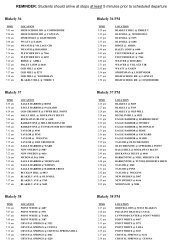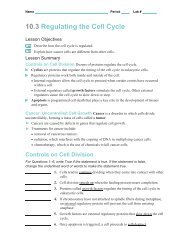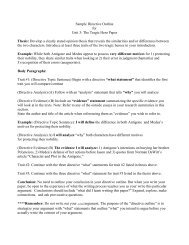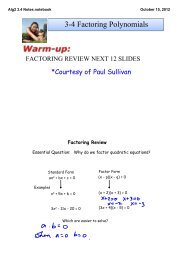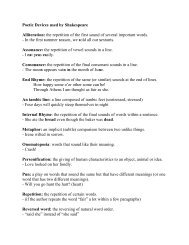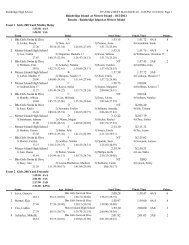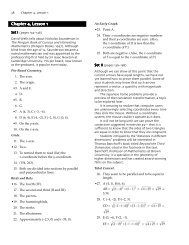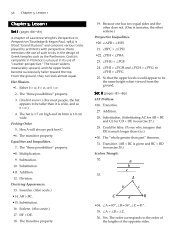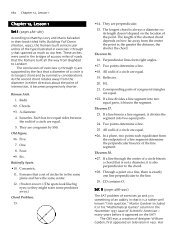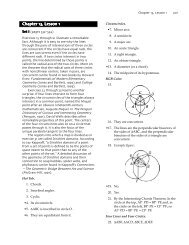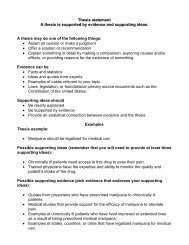Biology EOC Study Guide: Part 2, Cell Biology Content Standards ...
Biology EOC Study Guide: Part 2, Cell Biology Content Standards ...
Biology EOC Study Guide: Part 2, Cell Biology Content Standards ...
Create successful ePaper yourself
Turn your PDF publications into a flip-book with our unique Google optimized e-Paper software.
o The DNA code is transcribed into mRNA and translated by ribosomes to produce<br />
proteins. This is the process of PROTEIN SYNTHESIS: DNAmRNAProtein<br />
• <strong>Part</strong> of a DNA molecule, called a gene, is copied and turned into mRNA.<br />
• mRNA leaves the nucleus and goes to a ribosome.<br />
• The Ribosome calls on tRNA molecules to match up with the mRNA. The<br />
tRNA are pulling amino acids behind them.<br />
• The amino acids line up in the order originally dictated by DNA.<br />
• A new protein is made. It is used for a new cell structure or as an enzyme.<br />
In eukaryotes this information is stored in the cell nucleus in the form of chromosomes (DNA<br />
wrapped around proteins), while in prokaryotes this information floats as a circular DNA<br />
molecule in the cytoplasm<br />
Key Terms<br />
Chromosome: An organized structure of DNA and supporting regulatory proteins found in cells.<br />
Chromosomes contain many genes.<br />
DNA: Large molecules inside the nucleus of living cells that carry genetic information. The scientific<br />
name for DNA is deoxyribonucleic acid.<br />
Ribosome: A cell organelle constructed in the nucleus. It consists of two subunits and functions as<br />
the site of protein synthesis in the cytoplasm.<br />
What to look for:



